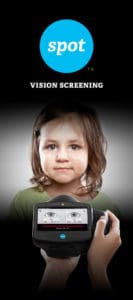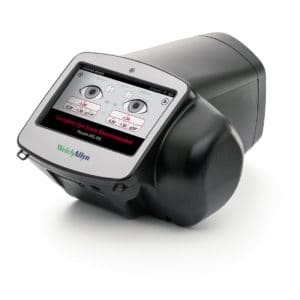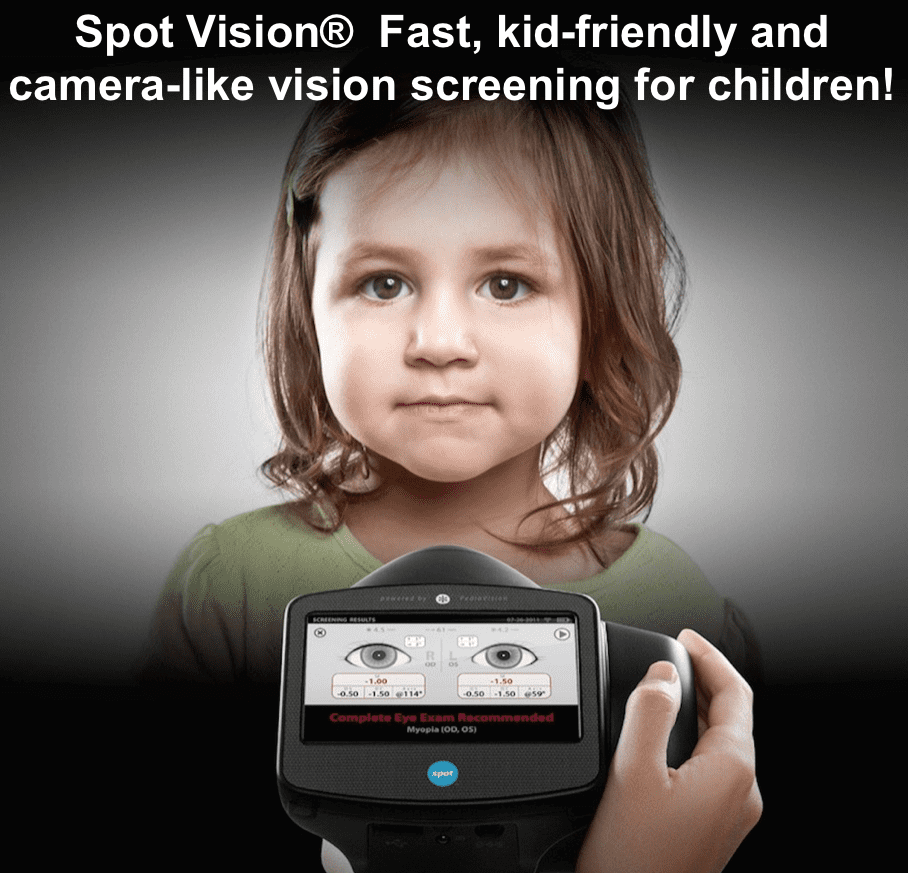 Did you know that failing to detect amblyopic (impaired or dim vision) risk factors in children may lead to partial or full blindness or issues with child development or social-emotional behavior? Or that 1/4 of school aged children suffer from a vision disorder? Or that vision disability is the single most prevalent disabling condition among children?
Did you know that failing to detect amblyopic (impaired or dim vision) risk factors in children may lead to partial or full blindness or issues with child development or social-emotional behavior? Or that 1/4 of school aged children suffer from a vision disorder? Or that vision disability is the single most prevalent disabling condition among children?
Several years ago, District 33-S received its first Welch Allyn Spot Vision Screener (a.k.a. Spot Camera) for use by all Lions Clubs in our district. The district was just approved to receive an LCIF matching grant to purchase another Spot camera! Lions from District 33-S, on a recent trip to Honduras took one of the Spot cameras with them and screened hundreds of children in the communities they served.
This camera is a specialized portable handheld device designed to help Lions quickly and easily detect vision issues on patients from 6 months of age through adult. Spot Vision Screener technology is changing the way routine vision screening is done. All Lions can learn how to use the Spot camera; contact Richard Freitas or the district eyemobile committee to find out when and where training is available.
So how does it work?
The spot camera screens both eyes at once from a nonthreatening 3-foot distance. The screening starts with a single touch to the camera and which initiates capture of results for both eyes in seconds. The older Snellen Chart test would take an average of 6 minutes to complete. Within seconds, the on-screen data results can be shared with the patient on screen or printed to discuss recommendations for follow-up care with an eye doctor.
The Spot Vision Screener can screen for and detect six amblyopic risk factors in children as young as 6 months through adults. It detects
- Myopia (nearsightedness)

- Hyperopia (farsightedness)
- Astigmatism (blurred vision)
- Anisometropia (unequal refractive power)
- Strabismus (eye misalignment)
- Anisocoria (unequal pupil size)
This camera provides an automated, objective vision screening that reduces the risk of missing pre-amblyopic and amblyopic risk factors in children and adults. The results displayed from the screening need no interpretation by the screener. The information can be passed on and shared with eye care specialist and doctors to receive appropriate care for the patient. The American Academy of Pediatrics supports instrument-based vision screening as an alternative to visual acuity testing with eye charts (e.g., Snellen Chart). These techniques have better success after 12 months of age and can be repeated at each annual preventative medicine encounter through 5 years of age or until visual acuity can be assessed reliably.
 This is a wonderful tool that we have to help our communities. It makes vision screening easier for us as Lions volunteers while requiring minimal effort from the child or patient. If you’d like to learn more about the Spot Vision Screener. Please contact our district eye mobile chair on the District 33-S website, http://e-district.org/sites/33s/page-9.php or our very own fellow Lion Richard Freitas.
This is a wonderful tool that we have to help our communities. It makes vision screening easier for us as Lions volunteers while requiring minimal effort from the child or patient. If you’d like to learn more about the Spot Vision Screener. Please contact our district eye mobile chair on the District 33-S website, http://e-district.org/sites/33s/page-9.php or our very own fellow Lion Richard Freitas.





